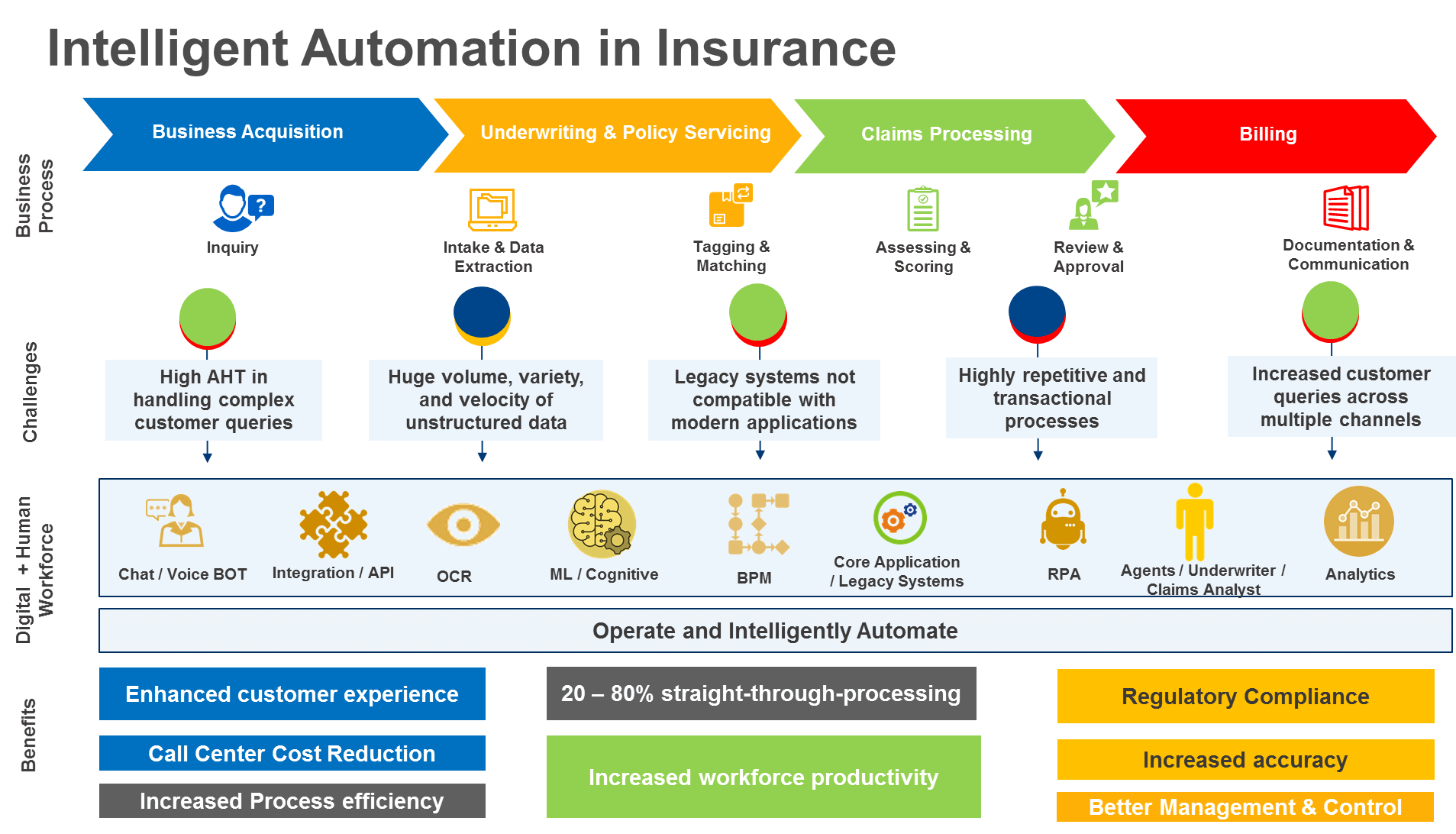
Insurance employees spend 10 to 15 percent of their time on repetitive computer tasks. Four of the top ten insurance companies in the U.S. are using some form of machine learning. Over the next three years, more than 75 percent of insurance companies plan to implement some type of insurance automation.
By 2030, manual underwriting will cease to exist for most personal and small-business products across life and property and casualty insurance. AI represents a potential cost savings of $1 trillion to U.S. companies across banking, investment management and insurance. Automation can reduce the cost of a claims journey by up to 30 percent.
The insurance industry will see $400 billion total cost reduction. By 2021, spending on this type of technology will reach $1.4 billion. Venture capitalists globally invested $2.6 billion in insurtechs in 2015, and nearly $ 1.7 billion in 2016.
Some use cases include (but are far from limited to):
- Automating customer requests. Automatically updating a customer’s address in a database or forwarding a service request to the proper department.
- Document generation. Having data pulled from emails, spreadsheets, applications, etc. and populate a closing form or claim document.
- Scheduling meetings. Scheduling a meeting in an employee’s calendar based on an email interaction.
- Claim processing. Porting information from a database to an application or vice versa to reduce the amount of “copy-and-paste” tasks a claims officer must perform.
Insurtech_auto1